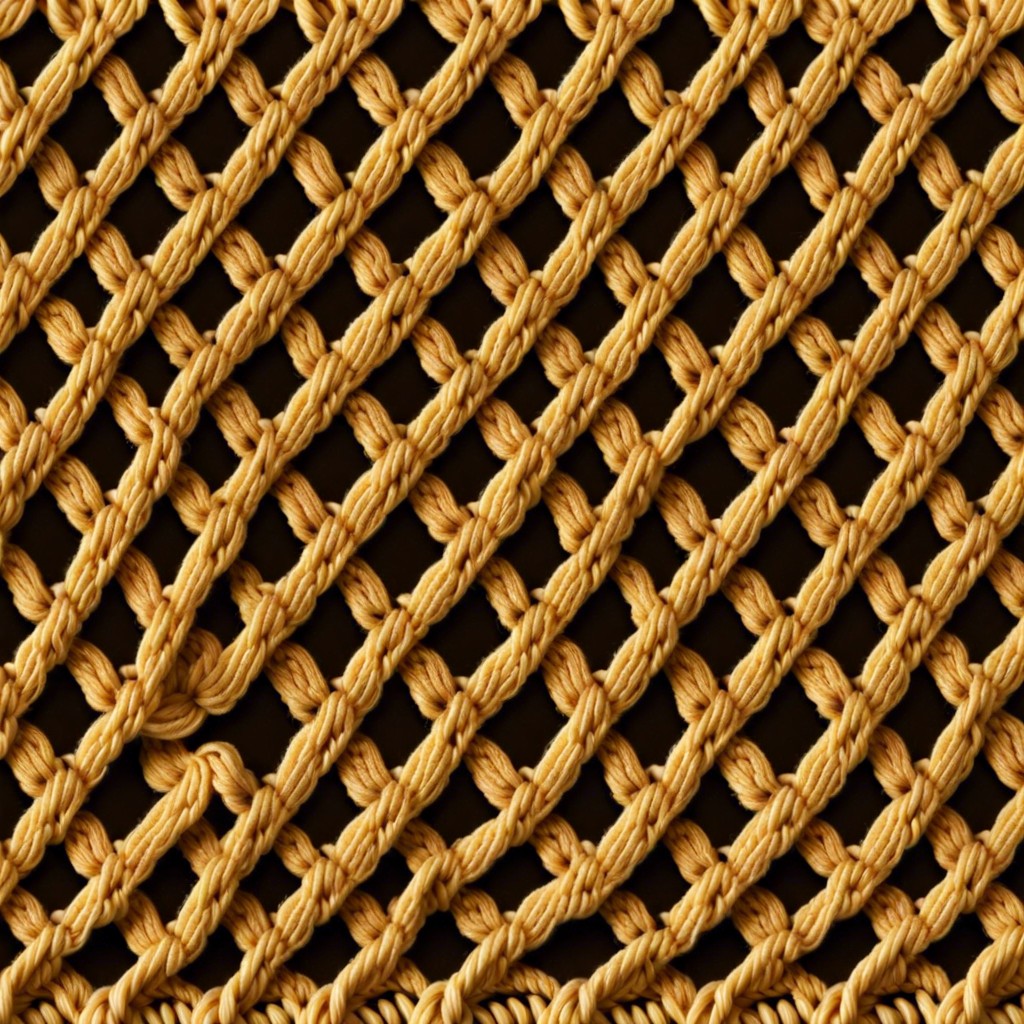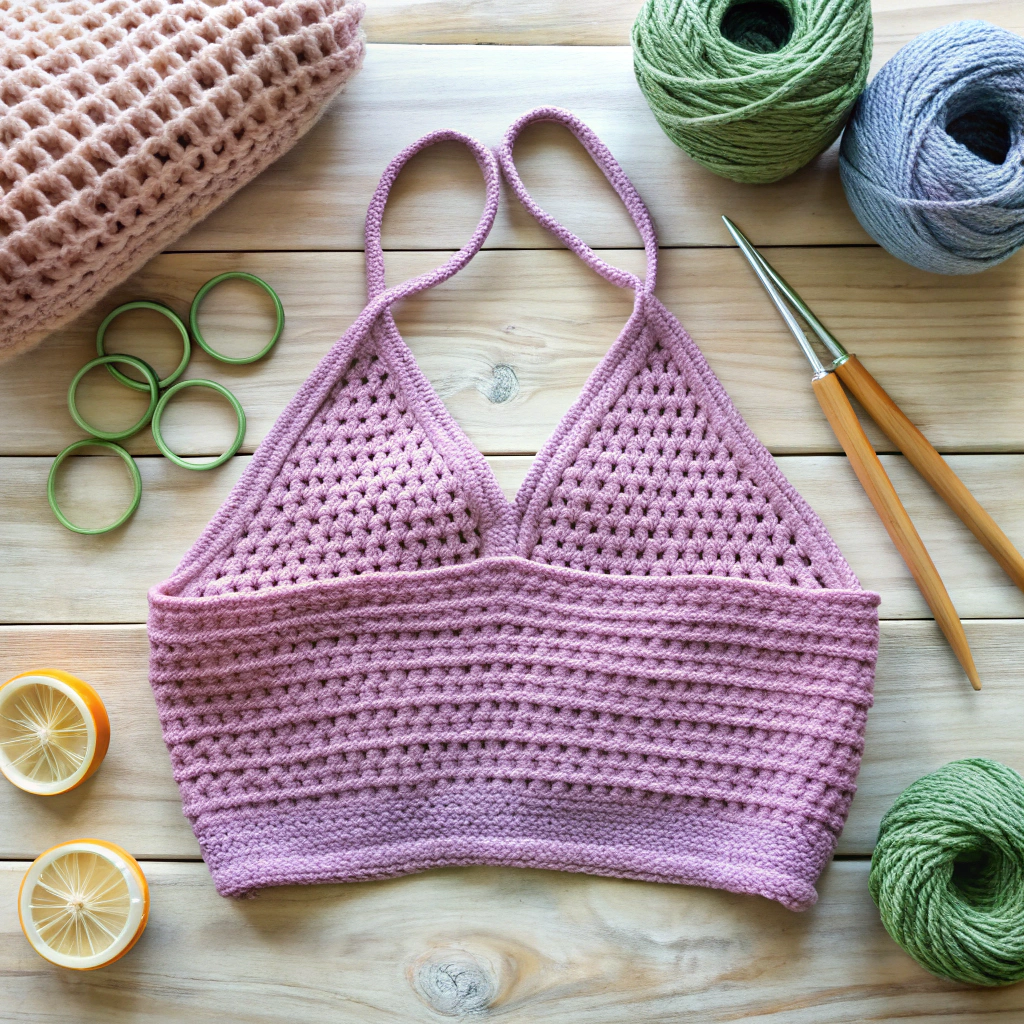Learn how to crochet the versatile rib stitch for adding texture and elasticity to your projects.
If you’ve ever stared in envy at the stretchy, textured wonders of ribbed crochet stitches and wished you could craft such magic, welcome to your new happy place. Ribbing isn’t just for knitting anymore—cue the angelic choir—and with techniques like BLO, front and back post stitches, and some yarn sorcery, you’ll be ribbing like a pro in no time! Get ready to dive into the nitty-gritty details and unleash a universe of cozy, stretchy, textured goodness.
Key takeaways:
- BLO – Work through back loop only for ribbed crochet stitch.
- Ribbing adds elasticity and texture to crochet projects.
- Use larger hook and lighter yarn for stretchy ribbing.
- Front and back post stitches add extra stretch and texture.
- Consistent tension and practice are key to mastering ribbing.
Crochet Ribbing Stitches & Abbreviations

Let’s decode the crochet secret language together, shall we? When diving into crochet ribbing, you’ll often come across abbreviations that look like alphabet soup. Here’s a quick guide to keep you from feeling like you’re deciphering ancient hieroglyphics:
BLO – This stands for Back Loop Only. When a pattern mentions BLO, you’re working your stitch through the back loop of your crochet piece only. Imagine you’re performing a backstage VIP move, sneaking in through the back.
FLO – Front Loop Only. Opposite of BLO, you’re maneuvering your crochet hook through the front loop of the stitch. It’s like saying hello to the front door.
FP – Front Post. This technique involves working your stitch around the post of the stitch from the previous row, from front to back. Think of it as giving your stitch a big bear hug.
BP – Back Post. Same idea as the front post, but you guessed it, from the back!
hdc – Half Double Crochet. A handy stitch often used in ribbing for its perfect balance of height and density.
sc – Single Crochet. Short and sweet, this is your go-to for strong, tight ribbing.
These little nuggets of shorthand are your stepping stones to mastering the ribbed crochet stitch. Now, go forth and conquer those abbreviations like a crochet pro!
Why Use Crochet Ribbing?
Ribbing in crochet adds a dash of elasticity and texture to your projects. It’s perfect for cuffs, hems, brims, and even cozies. Picture a snug sweater cuff that hugs your wrist without cutting off circulation—that’s the magic of ribbing!
It creates stretchable fabric, which is especially useful for items that need to fit well. Plus, those vertical lines are simply eye-catching and add a classic ribbed look resembling knitwear.
Ribbing also helps maintain the shape of your masterpiece. Because nobody wants a saggy hat or a floppy scarf, right? The structural integrity ribbing adds makes your work sturdy and practical while still looking great.
Back Loop Only (BLO) Rib Stitch
When diving into the Back Loop Only (BLO) rib stitch, it’s all about grabbing just that sneaky back loop of your crochet stitch. This minor adjustment creates beautifully textured ribs that resemble the comfy, stretchy nature of knit fabrics.
– To start, insert your hook under the back loop only of each stitch in the row. The front loop, the one gloating up front, gets ignored this time.
– Crochet as usual: single, half-double, or double crochet—though single crochet is the popular kid on the block for that ribbed effect.
– This technique works great for cuffs, waistbands, or anywhere you want a snug but flexible fit.
Remember, the key is consistency. Keep nabbing that back loop every time; it’s your fast pass to ribbed crochet bliss. Happy hooking!
Tips for Crocheting Back Loop Only Ribbing
Practice your tension: Consistent tension is key. If you crochet too tightly, your ribbing will be stiff enough to double as body armor. Too loose, and it will look like you’ve given up halfway through.
Count your stitches: Skipping stitches or adding extras is a classic mistake. For an even ribbing, keep a tally of your stitches like your life (or at least your project) depends on it.
Use a larger hook: Sometimes a bigger hook can help achieve that perfect balance of stretchiness and structure. It’s like giving your ribbing a spa day.
Turn your work: If you find your ribbing has “favoring” sides, try turning your work at the end of each row. This keeps the ribbing straight and unbiased—just like a trustworthy referee.
Practice, practice, practice: Like attempting to cook a soufflé without practice, don’t expect crochet ribbing to be perfect on the first go. Grab some scrap yarn and experiment until you nail it.
Differences Between BLO Ribbing and 3rd Loop Ribbing
BLO ribbing and 3rd loop ribbing might seem like distant crochet cousins, but they’re closer than you think. Both techniques create a textured, stretchy fabric, perfect for cuffs, brims, and other snug spots. But, the paths they take are a tad different.
BLO ribbing is made by working through the back loop only of each stitch. This creates a subtle horizontal ridge that looks a bit like knitted ribbing. Think of it as the reliable friend who always shows up on time.
3rd loop ribbing steps things up a notch by using the hidden loop behind the front and back loops of half double crochets. The result? More pronounced ridges with extra texture. It’s like the quirky friend who insists on wearing mismatched socks – in a good way.
Choose BLO if you’re looking for something classic and understated. Opt for 3rd loop ribbing when you want your project to stand out with a bit more character. Each has its charm, just like that one friend who eats pizza with a fork.
Ribbing Techniques: Front and Back Post Stitches
Front and back post stitches bring a fun twist to ribbing, making it even more textured and stretchy. Picture each crochet stitch as a little soldier standing in a row. With front and back post techniques, you’ll work around each soldier instead of through the normal loops.
To create a front post stitch, insert your hook from front to back around the post of the stitch you’re working into. Your hook should hug the post like it’s giving it a surprise bear hug. Yarn over, pull up a loop, then complete your stitch as usual. Voilà! Your stitch will pop out towards you.
The back post stitch is the shy sibling. Insert your hook from back to front around the post of the stitch. Imagine it’s playing peek-a-boo. Yarn over, pull up a loop, and finish the stitch in the standard fashion. This one will push the stitch away from you, adding depth and dimension.
These techniques give your crochet fabric a beautiful, elastic ribbing that’s perfect for cuffs, bands, and waistlines. Exhibit your newly acquired powers with a snazzy hat or a cozy pair of gloves – your creations will not only look fantastic but will fit snugly too.
Achieving Stretchiness in Crochet Ribbing
Stretchiness is key in crochet ribbing to give it that perfect fit. Here’s how you can achieve it:
First, stick with lighter yarn weights. They allow for more flexibility, unlike bulky yarn that can be as stiff as an old breadstick.
Second, use a larger-than-usual hook. It sounds counterintuitive, but a larger hook helps to keep your stitches looser, resulting in a more stretchy fabric.
Third, don’t over-tighten your tension. Think Goldilocks: not too tight, not too loose, but just right. Tight stitches can turn your ribbing into a non-stretchy nightmare.
Lastly, consider adding a bit of ribbing magic with front and back post stitches. They inherently add stretch because of the way the stitches are worked around the post instead of through the loops.
With these tweaks, your crochet ribbing will have the stretchy charm it needs, making your project comfy and snug.




